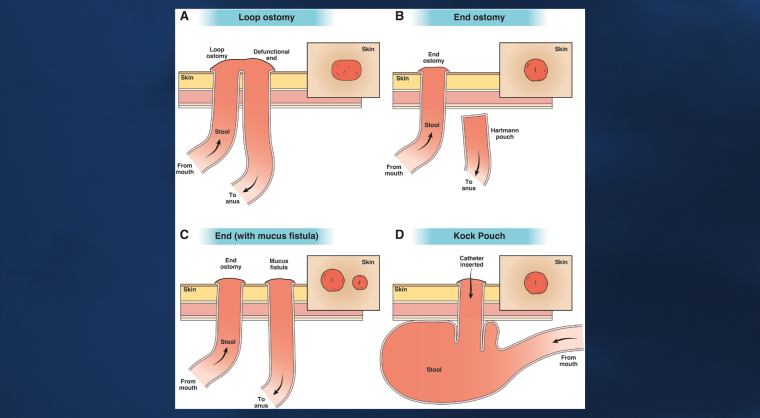AGA’s newest Clinical Practice Update provides a multidisciplinary review and commentary on the management of patients with enteral stomas (ostomies).
Quick watch:
Author Dr. Jill Gaidos introduces her co-authors and outlines the clinical practice update.
Enteral ostomies are common in the management of patients with conditions such as: colorectal cancer, IBD, diverticular disease, intestinal trauma and intestinal perforation. Approximately 750,000 Americans live with an ostomy and 130,000 new ostomy surgeries occur in the United States annually. However, little guidance exists to support clinicians in managing patients with an ostomy beyond the initial perioperative period.
Ostomy types
- Created from a portion of the colon
- Most common type of enteral stoma
- Output is easier to manage with formed bowel movements typically once a day
- Created from the terminal ileum close to the ileocecal valve
- Easier to construct and reverse
- Associated with more dehydration and skin breakdown
- Output is more liquid and warrants emptying 3-4 times daily
- Created when the intestine is divided and the proximal end becomes the stoma and the distal end stays in the abdomen
- The easiest type of stoma for patients to pouch and most often used in patients with permanent stomas
- Created by bringing a continuous piece of intestine through the abdominal wall leaving 2 intestinal openings side by side
- Frequently use when a temporary diversion is needed and is easy to create and reverse
- Also known as the Kock pouch or the Barnett Continent Intestinal Reservoir
- Consists of an internal pouch made of pleated intestine to create a nipple valve in the efferent limb, which prevents the passage of stool through the ostomy until intubated with a catheter
- Uncommon due to high rates of complications
Ostomy complications and management
- Early high ostomy output which can lead to dehydration (more common in patients with an ileostomy)
- Ostomy leakage
- Stomal retraction
- Dermatological problems
- Chronic high ostomy output
- Parastomal hernia
- Stomal prolapse
Ostomies can carry a psychological impact on patients. Concerns regarding fear of leakage; odor; disclosure to partners, family, and friends; clothing; intimacy; travel; and difficulty with self-care should be addressed through preoperative and postoperative education.
Read the full AGA Clinical Practice Update on Management of Ostomies: Commentary, published in the September issue of Clinical Gastroenterology and Hepatology.













